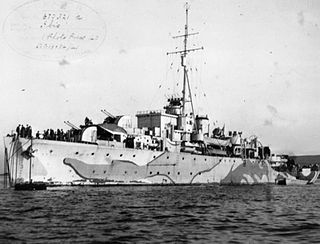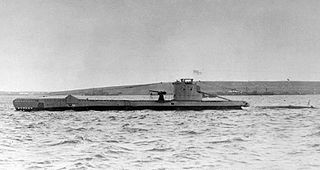 W
WHMS Bedouin was a Tribal-class destroyer of the British Royal Navy that saw service in World War II.
 W
WEmpire Defender was a 5,649 GRT cargo ship that was built in 1910 as Freienfels by Joh. C. Tecklenborg in Geestemünde, Germany. She was seized by the United Kingdom in 1914, passing to the Admiralty. In 1920, she was passed to the Secretary of State for India.
 W
WHMS Fearless was an F-class destroyer built for the Royal Navy during the 1930s. Although assigned to the Home Fleet upon completion, the ship was attached to the Mediterranean Fleet in 1935–36 during the Abyssinia Crisis. During the Spanish Civil War of 1936–1939, she spent time in Spanish waters, enforcing the arms blockade imposed by Britain and France on both sides of the conflict. Several months after the start of the war in September 1939, Fearless helped to sink one submarine and sank another one in 1940 during the Norwegian Campaign. She was sent to Gibraltar in mid-1940 and formed part of Force H where she participated in the attack on the Vichy French ships at Mers-el-Kébir and the bombardment of Genoa. Fearless helped to sink one final submarine in 1941 and escorted many Malta convoys in the Mediterranean before she was torpedoed by an Italian bomber and had to be scuttled on 23 July 1941.
 W
WHMS Foresight was one of nine F-class destroyers built for the Royal Navy during the 1930s. She was assigned to the Home Fleet upon completion. Unlike her sister ships, she does not appear to have been attached to the Mediterranean Fleet in 1935–36 during the Abyssinia Crisis, nor did she enforce the arms blockade imposed by Britain and France on both sides of the conflict the Spanish Civil War of 1936–1939. The ship escorted the larger ships of the fleet during the early stages of World War II and played a minor role in the Norwegian Campaign of 1940. Foresight was sent to Gibraltar in mid-1940 and formed part of Force H where she participated in the attack on Mers-el-Kébir and the Battle of Dakar. The ship escorted numerous convoys to Malta in 1941 and Arctic convoys during 1942. Later that year, Foresight participated in Operation Pedestal, another convoy to Malta. She was torpedoed by an Italian aircraft on 12 August and had to be scuttled the next day.
 W
WHMS Grimsby was a sloop of the British Royal Navy, the lead ship of her class. Grimsby was built in the 1930s, entering service in 1934. Serving most of her pre-war service at Hong Kong, Grimsby was deployed on convoy escort duties along the East coast of the Britain and in the Mediterranean Sea during the Second World War, and was sunk by dive bombers off Tobruk on 25 May 1941.
 W
WHMS Ibis, pennant number U99, was a Black Swan-class sloop of the Royal Navy, named after the Ibis.
 W
WHMS Imperial was one of nine I-class destroyers built for the Royal Navy during the 1930s. She was scuttled by HMS Hotspur in 1941 after she had been crippled by Italian bombers.
 W
WHMS Juno was a J-class destroyer of the Royal Navy laid down by the Fairfield Shipbuilding and Engineering Company, Limited, at Govan in Scotland on 5 October 1937, launched on 8 December 1938 and commissioned on 25 August 1939. Juno participated in the Battle of Calabria in July 1940 and the Battle of Cape Matapan in March 1941.
 W
WHMAS Nestor (G02) was an N-class destroyer of the Royal Australian Navy (RAN). Built in Scotland, Nestor was commissioned in February 1941; although manned by Australians and commissioned as an Australian warship, she remained the property of the Royal Navy.
 W
WHMS Pandora was a British Parthian-class submarine commissioned in 1930 and lost in 1942 during the Second World War. This class was the first to be fitted with Mark VIII torpedoes. On 4 July 1940 she torpedoed and sank the French aviso Rigault de Genouilly off the Algerian coast. In an extension of the Lend-Lease program, Pandora, along with three other British and French submarines, was overhauled at Portsmouth Naval Shipyard in the United States. She was sunk on 1 April 1942 by Junkers Ju 87 aircraft from Sturzkampfgeschwader 3 at the Valletta dockyard, Malta.
 W
WHMS Sikh was a Tribal-class destroyer of the British Royal Navy. The ship entered service in 1938 and served during the Second World War, participating in the sinking of Bismarck and the Battle of Cape Bon. In 1942, while participating in a commando raid, Sikh was sunk by a combination of shore artillery, antiaircraft guns and aerial bombs.
 W
WHMS Urge was a British U-class submarine, of the second group of that class, built by Vickers Armstrong, Barrow-in-Furness. She was laid down on 30 October 1939, and was commissioned on 12 December 1940. From 1941–1942 she formed part of the 10th Submarine Flotilla based in Malta and is the only Royal Navy ship to have borne the name. Urge spent most of her career operating in the Mediterranean, where she damaged or sank a number of Italian warships and merchant vessels and took part in special operations. She was commanded by Lieutenant-Commander Edward P. Tomkinson, DSO, RN. She was lost with all hands on 27 April 1942, after striking a naval mine off Malta.
 W
WHMAS Waterhen (D22/I22) was a W-class destroyer that served in the Royal Navy and the Royal Australian Navy (RAN). Built during World War I, the destroyer was completed in mid 1918, and commissioned into the Royal Navy. In 1933, Waterhen and four other British ships were transferred to the RAN. The ship's early RAN career was uneventful, with periods spent decommissioned in reserve, but she was reactivated in September 1939, and deployed to the Mediterranean as part of the Australian destroyer force: the Scrap Iron Flotilla. During her time in the Mediterranean, Waterhen was involved in escort and patrol duties, performed shore bombardments, and participated in Allied evacuations from Greece and Crete. On 29 June 1941, while operating with the Tobruk Ferry Service, Waterhen was heavily damaged by Axis aircraft. Attempts to tow the ship to port were unsuccessful, and she sank on 30 June; the first RAN ship lost to combat in World War II.